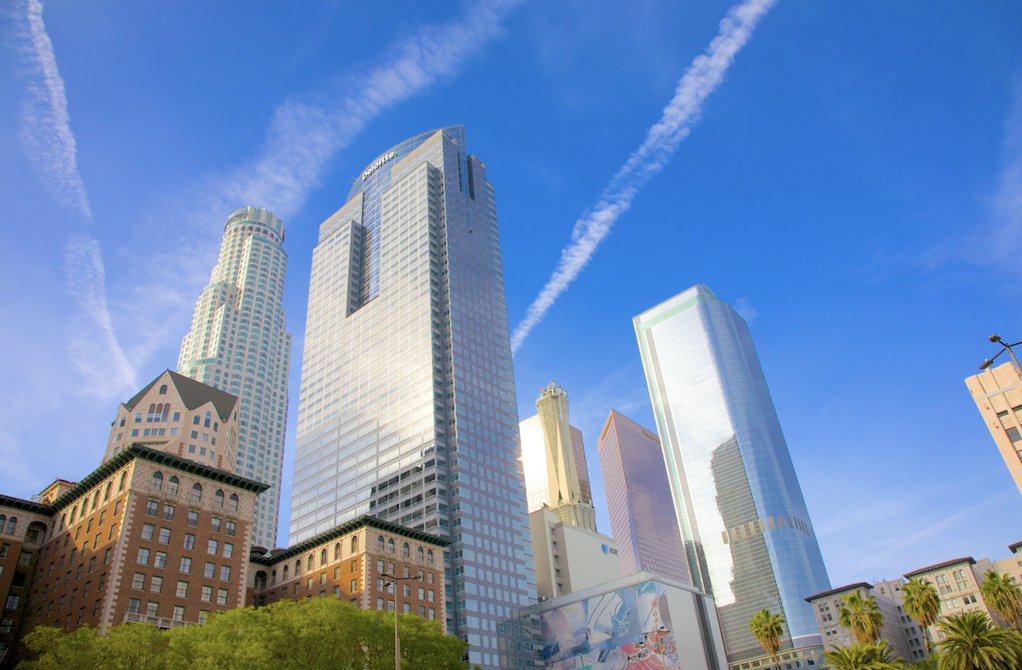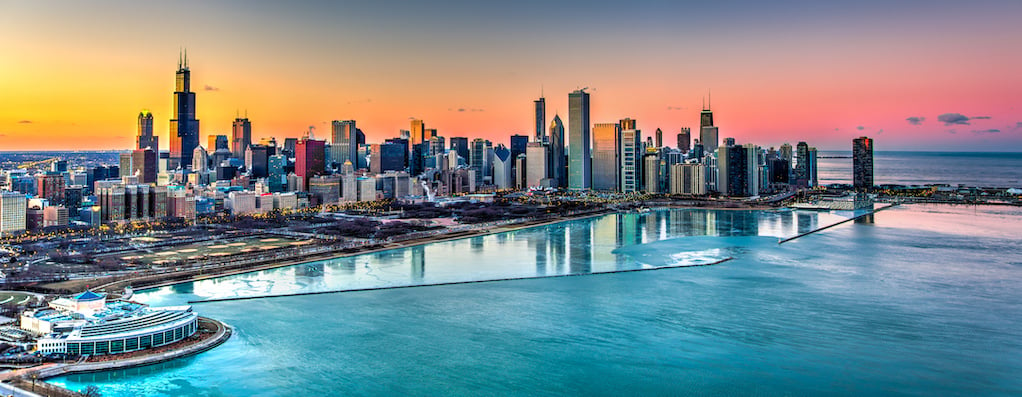In this article, you'll learn about:
- The top cities leading in office-to-residential conversions.
- New York City's large-scale adaptive reuse projects and zoning changes.
- Los Angeles' expansion of adaptive reuse citywide to address housing shortages.
- Chicago's targeted plan for converting office spaces into affordable housing.
Vacant office space is taking up hundreds of millions of square feet across the country. Cities are losing foot traffic, economic activity, and tax revenue from the dismal office market nationwide. At the same time, there is a serious lack of residential buildings and affordable housing in these areas.
And with no end in sight to the high office vacancy rate, adaptive reuse is being suggested to bring new life to the country's central business districts. Office-to-residential conversions are on the rise, but to convert office buildings for residential uses, a lot of financial support and complex construction is required.
Regardless, developers are still looking to take advantage of all the unused office space and many major markets are spearheading commercial to residential projects (and legislature that makes the process easier). These office markets also coincidentally have some of the highest vacancy rates.
So, read on to learn which cities have the most robust office to housing conversions in the pipeline.
1. New York City
New York City has a lot of empty office buildings. With a 22% vacancy rate, it's like having over 40 skyscrapers the size of the Chrysler Building sitting empty. This represents a massive issue for the city because the office sector has historically been responsible for 21% of the property taxes.

Such a big issue demands a big response from the city. Now, residential conversion has become a top priority for Manhattan government and it's launching the country's current largest adaptive reuse project. 25 Water Street, once home to Daily News and JPMorgan Chase, was purchased by two firms (GFP Real Estate and Metro Loft) for about $250 million. And the firms are planning to spend hundreds of millions more on converting the 1960's structure into more than 50 market-rate and luxury apartments. By ushering in a mixed-use environment, it is a powerful attempt to reclaim lost foot traffic and economic stimulus lost to zombie buildings.
All said and done, NYC’s Mayor Adams wants to create 20,000 new apartments in Lower Manhattan to confront the housing shortage. To achieve this, he's included proposals to simplify zoning restrictions and offer tax breaks to property owners.
Zoning is one of the foremost challenges when converting offices. And Governor Kathy Hochul has also introduced legislation aimed at streamlining building conversions. With this recent activity, it has freed up the potential number of buildings significantly that are eligible for commercial to residential conversions.
|
“While we are enabling, or what we propose to do is enable 136 million square feet to be eligible, we do not believe that 136 million square feet will take us up on the opportunity." -Dan Garodnick, chair of New York’s Department of City Planning |
2. Los Angeles
Los Angeles has been a trailblazer in the realm of adaptive reuse. Back in 1999, the city implemented an ordinance permitting developers to transform buildings dating back to 1974 or earlier into residential spaces in the downtown area. This innovative approach resulted in the creation of 12,000 housing units over a span of 15 years. Currently, the Planning Department is actively crafting a new ordinance that would extend the practice of adaptive reuse citywide, encompassing properties aged 15 years or more. This expansion represents a long-awaited progression of an already proven program.
Now, amidst challenges in office leasing and the ever-growing demand for housing, Los Angeles finds itself at a crossroads, embracing office to residential conversion as a way to reshape its urban fabric and provide more accessible housing options for its residents.
With leasing activity dropping by 37% in the first quarter of 2023 compared to the previous year, and the office availability rate reaching an all-time high, the city is grappling with a significant challenge. The accumulation of vacant, soon-to-be-vacant, and available sublease spaces now accounts for 26.2% of the market, approximately 44 million square feet of office space remains unused. At the same time, the city faces a stark lack of housing downtown, worsening the city's homelessness issue.

Mayor Karen Bass emphasized the urgent need for affordable housing: “Los Angeles needs more housing that Angelenos can afford.”
Adaptive reuse development emerges as a solution to address this pressing issue. As part of this wave of transformation, Los Angeles County has the potential to create up to 113,000 residential units in downtown Los Angeles by repurposing underutilized hotels, offices, and other commercial structures, according to a recent RAND study.
Stay on top of the latest in the commercial leasing world.
3. Chicago
Like the other cities on this list, Chicago has a major empty office building problem. Chicago's downtown office space posted a 22.4% vacancy rate in the first quarter of 2023. Now as 23.0% of office loans are set to mature in the next two years, things are set to get worse fast if nothing is done. On top of this, excess supply from over-construction is set to further exaggerate the low demand for space and rampant vacancies.

Because of this, the city has developed a more targeted approach for office conversions than other metro areas. And it is hoping that overhauling its city scape will revitalize Chicago.
|
The Chicago plan, unveiled under Mayor Lori Lightfoot, seeks to create 1,000 new residential units along the LaSalle corridor, 30 percent of them affordable. |
The 1,000 new housing units will put a significant dent into of LaSalle Street's 5 million square feet of vacant commercial space. Anticipating the promising potential of converting buildings, Chicago envisions the creation of 2,454 apartments from office spaces in the coming years. Remarkably, about 70% of the units in Chicago's pipeline for conversion are repurposed office spaces, surpassing the proportions seen in both Los Angeles and New York City.
Pending approval by the Community Development Commission and City Council, the five total proposed adaptive reuse projects would collectively contribute to nearly $1 billion in corridor investments. This combined endeavor represents the most substantial effort in the United States to transform offices into affordable residential spaces. Additionally, these initiatives are expected to significantly diminish upper-story commercial vacancies along the corridor, reducing them by almost 50%.
4. San Francisco
San Francisco is plagued by its empty and underutilized office buildings. The city has been victim to the growing prevalence of remote work which has put the office demand in a tailspin. From its pre-pandemic vacancy rate norm of 7% in 2019, rates have exploded, even reaching 28% in downtown areas. Now couple this with a dismal occupancy rate of 44%.
As those drastically under-occupied leases come due, they will exaggerate an already market clogged by empty office space. The over-saturation will become far worse indicated already by dropping rents and hundreds of thousands of square feet hitting the sublease market.

To confront this, the city is also working off legislation that simplifies converting commercial real estate to residential space.
The Office of Economic and Workforce Development and the San Francisco Planning Department, are inviting new proposals from downtown building owners and sponsors looking into specific projects that would convert underused commercial space into housing or other newer uses. Easing the permitting process would allow developers to take advantage of the vacant space while confronting the housing crisis.
|
"I am optimistic about the opportunities for downtown’s ability to adapt to our challenges. Our historic downtown buildings, in particular, provide a unique opportunity for adaptive reuse, especially when coupled with the advantages of tax benefits provided by the Mills Act and Federal Historic Tax Credits." -San Francisco Board of Supervisors President Aaron Peskin |
Still the financial feasibility of such projects presents a challenge. The vast majority of offices lack the right structure for simple conversions. The deep floor plates of offices are difficult to carve up into residences which require sufficient natural light. But beyond issues with the floor plate of a building floor, there's a lot of hurdles before an office building can become an apartment building. Read more about The Costly Complexities of Office Conversions.
Is Converting Office Buildings the Future?
Many cities are recognizing the potential of adaptive reuse to address the evolving dynamics of their office spaces. While Los Angeles and Chicago stand out as pioneers in this regard, it's becoming evident that the transformation of underutilized offices into residential units holds promise for urban development. As cities navigate changes in the demands of office tenants and fluctuating office values, the concept of repurposing commercial spaces is gaining traction.
However, it's important to note that widespread adoption of this solution may hinge on further adjustments, including potential declines in office values. The journey towards converting offices into thriving residential communities is an ongoing one, driven by the need for innovative solutions in the ever-evolving urban landscape.
In the mean time, commercial tenants should be aware of trends that will influence the leverage they have when looking for office space. So don't fall behind and subscribe to our blog to learn the proven CRE techniques and latest news that will strengthen your position as a corporate tenant.








